
INSTRUCTION MANUAL
Product images may vary slightly from actual product.
52" BASICS PRO DESIGNER
Page is loading ...

TABLE OF CONTENTS
SAFETY RULES .........................................................4
TOOLS AND MATERIALS REQUIRED .......................5
PACKAGE CONTENTS ...............................................5
MOUNTING OPTIONS ................................................6
HANGING THE FAN .....................................................7
INSTALLATION OF SAFETY SUPPORT ....................10
ELECTRICAL CONNECTIONS ..................................11
FINISHING THE INSTALLATION.............................13
ATTACHING THE FAN BLADES ..............................14
INSTALLING THE LAMP BALLAST ASSEMBLY .....14
OPERATING INSTRUCTIONS ................................16
TROUBLESHOOTING ............................................18
SPECIFICATIONS....................................................19
52" BASICS PRO DESIGNER | 3
FCC INFORMATION................................................20
INSTALLING THE BATTERIES................................15

4 | KICHLER.COM
SAFETY RULES
1. To reduce the risk of electric shock, ensure electricity has been turned off at
the circuit breaker or fuse box before beginning.
2. All wiring must be in accordance with the National Electrical Code (NEC)
and local electrical codes. Electrical installation should be performed by
a qualified licensed electrician.
3. WARNING: To reduce the risk of personal injury, use only the two steel
screws (and lock washers) provided with the outlet box for mounting to
the outlet box. Most outlet boxes commonly used for the support of
lighting fixtures are not acceptable for fan support and may need to be
replaced, consult a qualified electrician if in doubt.
The outlet box and support structure must be securely mounted and capable
of reliably supporting a minimum of 50 pounds. Use only CUL Listed outlet
boxes marked “FOR FAN SUPPORT”.
The fan must be mounted with a minimum of 7 feet clearance from the
trailing edge of the blades to the floor.
Do not operate reversing switch while fan blades are in motion. Fan must be
turned off and blades stopped before reversing blade direction.
Avoid placing objects in the path of the blades.
WARNING
TO REDUCE THE RISK OF FIRE, ELECTRIC SHOCK OR
PERSONAL INJURY, MOUNT FAN TO OUTLET BOX MARKED
“ACCEPTABLE FOR FAN SUPPORT”.
To avoid personal injury or damage to the fan and other items, be cautious when
working around or cleaning the fan.
Do not use water or detergents when cleaning the fan or fan blades. A dry dust cloth
or lightly dampened cloth will be suitable for most cleaning.
After making electrical connections, spliced conductors should be turned upward and
pushed carefully up into outlet box. The wires should be spread apart with the
grounded conductor and the equipment-grounding conductor on one side of the outlet
box.
Electrical diagrams are reference only. Light kits that are not packed with the fan must
be Listed and marked suitable for use with the model fan you are installing. Switches
must be General Use Switches. Refer to the Instructions packaged with the light kits
and switches for proper assembly.
WARNING
TO REDUCE THE RISK OF PERSONAL INJURY, DO NOT BEND THE
BLADE BRACKETS (ALSO REFERRED TO AS FLANGES) DURING
ASSEMBLY OR AFTER INSTALLATION. DO NOT INSERT OBJECTS IN THE
PATH OF THE BLADES.
4.
5.
6.
7.
8.
9.
10.
11.

1)
2)
3)
Safety cable hardware:
wood screw (1), flat washer (1)
Blade attachment hardware: screws (17), washers (17)
Blade bracket attachment hardware: screws (2)
4) Balance kit
5) Mounting hardware: wood screws(2), flat washers(2), star
washers(2), wire nuts(3) screws(2)
Canopy cover
52" BASICS PRO DESIGNER | 5
a
b
c
d
f
e
g
h
TOOLS AND MATERIALS REQUIRED
Phillips screwdriver
Blade screwdriver
11mm wrench
Step ladder
Wire cutters
PACKAGE CONTENTS
Unpack your fan and check the contents . You should have the following items:
a. Fan blades (5)
b. Ceiling mounting bracket
c. Canopy
d. Ball/downrod assembly
e. Fan motor assembly
f. LED light assembly
g. Set of 5 blade brackets and
Pre-installed mounting screws
h. . Package hardware
i.
i
j
k
j. Transmitter
k. Receiver

6 | KICHLER.COM
MOUNTING OPTIONS
If there isn't an existing UL (cUL for Canadian Installation) listed
mounting box, then read the following instructions. Disconnect the
power by removing fuses or turning off circuit breakers.
Secure the outlet box directly to the building structure. Use
appropriate fasteners and building materials. The outlet box and
its support must be able to fully support the moving weight of the
fan (at least 50 lbs). Do not use plastic outlet boxes.
Figures 1, 2 and 3 are examples of different ways to mount the
outlet box.
NOTE: If you are installing the ceiling fan on a sloped (vaulted)
ceiling, you may need a longer downrod to maintain proper
clearance between the tip of the blade and the ceiling. A minimum
clearance of 12" is suggested for optimal operation.
NOTE: Depending on the location you have selected for
installation, you may need to purchase and install a "Joist Hanger"
for the support of the outlet box. Make sure the joist hanger you
purchase has been designed for use with ceiling fans. (Fig. 4)
Fig. 1
Outlet box
Outlet box
Fig. 2
Provide strong
support
Recessed
outlet box
Ceiling
mounting
plate
Fig. 3
ANGLED CEILING
MAXIMUM 22° ANGLE
Outlet box
Fig. 4

HANGING THE FAN
REMEMBER to turn off the power. Follow the steps below to hang your fan
properly.
NOTE: This ceiling fan is supplied with two types of hanging assemblies; the
standard ceiling installation using the downrod with ball and socket mounting and
the “close-to-ceiling” installation. The “close-to-ceiling” installation is recommended
in rooms with less than 8-feet ceilings or in areas where additional space is
desired from the floor to the fan blades.
Fig. 5
CUL Listed
electrical
box
Ceiling
mounting
bracket
Hook
120V Wires
Washers
52" BASICS PRO DESIGNER | 7
Mounting screws
(supplied with
electrical box)

HANGING THE FAN
Standard Ceiling Installation
Step 1. Pass the 120-volt supply wires through the center hole in the ceiling hanger
bracket as shown in Fig. 5.
Step 2. Secure the hanger bracket to the ceiling outlet box with the screws and
washers provided with your outlet box.
Step 3. Remove the hitch pin, lock pin and set screws from the top of the motor assembly.
Step 4. Route wires exiting from the top of the fan motor through the canopy and
then through the ball/downrod (Fig. 6)
Step 5. Align the holes at the bottom of the downrod with the holes in the collar on top
of the motor housing (Fig. 6). Carefully insert the hitch pin through the holes in the collar
and downrod. Be careful not to jam the pin against the wiring inside the downrod.
Insert the locking pin through the hole near the end of the hitch pin until it snaps into
its locked position, as noted in the circle inset of Fig. 6.
Step 6. Tighten two set screws on top of the fan motor firmly (Fig. 6).
Step 7. Place downrod ball into the hanger bracket socket (Fig 7).
Rotate the entire assembly until the "Check Tab" has dropped into the "Registration Slot"
and seats firmly. (Fig. 7)
The entire motor assembly should not rotate (left or right) when seated properly.
WARNING: Failure to reattach the cross pin and seat the "Check Tab" can cause the fan to
fall from the ceiling during operation. Take special care to make sure this pin is reattached.
Fig. 7
Fig.
6
Downrod
Lock pin
Set screws
Ceiling canopy
Hitch pin
Registration slot
8 | KICHLER.COM

HANGING THE FAN
Close-To-Ceiling Installation
Step 1. Pass the 120-volt supply wires through the center hole
in the ceiling hanger bracket as shown in Fig. 5.
Step 2. Secure the hanger bracket to the ceiling outlet box
with the screws and washers provided with your outlet box.
Step 3. Remove three of the six screws and lock washers
(every other one) from the collar of top motor (Fig. 8)
Step 4. Place the ceiling canopy and the gasket over the collar
at the top of the motor. Align the mounting holes with the holes
in the motor and fasten using the screws and lock washers
provided (Fig. 8).
Step 5. Tighten the mounting screws securely (Fig. 8).
WARNING: Failure to completely tighten the three screws in
step 4 could result in fan loosening and possibly falling.
Step 6. Hang the fan on the hook of the hanger bracket. Be
certain that the canopy is fully locked into hook as shown in
Fig. 9. This will allow you to make the electrical connections.
Fig. 8
Hook
Fig. 9
52" BASICS PRO DESIGNER | 9
Screws and Lock
washers (3 of 6
places)
Canopy
Collar
Gasket

INSTALLATION OF SAFETY SUPPORT
(Required for Canadian installation ONLY)
A safety support cable is provided to help prevent the ceiling fan from faIling.
Please install it as follows:
Step 1. Attach the provided wood screw and washers to the ceiling joist next to
the mounting bracket but do not tighten. (Fig. 10)
Step 2. Adjust the length of the safety cable to reach the screw and washers by
pulling the extra cable through the cable clamp until the overall length is correct.
Put the end of the cable back through the cable clamp, forming a loop at the end
of the cable. Tighten the cable clamp securely. Put the loop in the end of the
safety cable over the wood screw and under the washer. Tighten the wood screw
securely.
NOTE: Although the safety support cable is required for Canadian installations
only, it’s a good idea to make the attachment with any installation.
Ceiling mounting bracket
Attach safety cable
to ceiling joist with
screw and washer
Fig. 10
10 | KICHLER.COM
Safety support cable

ELECTRICAL CONNECTIONS
WARNING: To avoid possible electric shock, be sure you have turned off the power at
the main circuit panel.
NOTE: Code switch: Codes are set by pushing dip switches up or down. It is
imperative that the code used for both transmitter and receiver is the same, otherwise
remote control will not work. Please note the code switch will enable you to operate a
second remote controller independently. For example, if you have two ceiling fans with
two remote control units, set different codes for each set of transmitter/receiver. This
will enable you to operate each ceiling fan independently (Fig. 11).
If this switch is set to the X position it will disable the dimming function of your fixture.
NOTE: Please recheck to make sure the switches on transmitter and receiver are set
to the same position. Any combination of settings will operate the fan as long as the
transmitter and receiver are set to the same position (Fig 12).
Step 1. Insert the receiver into the ceiling mounting bracket with the flat side of the
receiver facing the ceiling (Fig 12). For best performance, make sure the black antenna
on the end of the receiver remains extended and not tangled with any of the electrical
wires.
52" BASICS PRO DESIGNER | 11
Fig. 11
Fig. 12
Fig. 13
Receiver
Receiver
Ceiling mounting
bracket
Ceiling mounting
bracket
Canopy
Canopy
Dip switch

ELECTRICAL CONNECTIONS (CONTINUED)
Step 2. Motor to Receiver Electrical Connections: (Fig. 14) Connect the black wire from
the fan to the black wire marked "TO MOTOR L" on the receiver. Connect the white
wire from the fan to the white wire marked "TO MOTOR N" on the receiver. Connect
the blue wire from the fan to the blue wire marked "FOR LIGHT" on the receiver.
Secure all the wire connections with the plastic wire nuts provided.
Step 3. (Fig. 14) Receiver to House Supply Wires Electrical Connections: Connect the
black (hot) wire from the ceiling to the black wire marked "AC in L" from the receiver.
Connect the white(neutral) wire from the ceiling to the white wire marked "AC in N"
from the Receiver. Secure the wire connections with the plastic wire nuts provided.
Step 4. (Fig. 14) If your outlet box has a ground wire (green or bare copper) connect it
to the fan ground wires; otherwise connect the hanging bracket ground wire to the
mounting bracket. Secure the wire connection with a plastic nut provided. After
connecting the wires, spread them apart so that the green and white wires are on one
side of the outlet box and black and blue wires are on the other side. Carefully tuck the
wire connections up into the outlet box.
NOTE: Fan must be installed at a maximum distance of 30 feet from the Remote
Transmitter for optimal signal transmission between the transmitter and the fan's
receiving unit.
Fig. 14
Ground to
mounting
bracket or
downrod
Outlet box
Black (hot)
Black ("AC IN L")
Receiver
Blue (for light)
White (neutral)
Green or bare
copper (ground)
White ("AC IN N")
Black ("to motor L")
White ("to motor N")
Blue (for light)
White (neutral)
Black (motor)
12 | KICHLER.COM

FINISHING THE INSTALLATION
Standard Ceiling Installation
Step 1. Tuck all the connections neatly into the ceiling outlet box.
Step 2. Slide the canopy up to ceiling and attach the canopy to the ceiling mounting
bracket using 4 screws at the top edge of the mounting bracket. Insert each screw
through the canopy mounting hole and into the mounting bracket. Tighten all screws
securely. (Fig. 15)
Close-To-Ceiling Installation
Step 1. Tuck all the wire connections neatly above the receiver and into the ceiling
outlet box.
Step 2. Remove the fan from the hook on the ceiling mounting bracket. Attach the
fan assembly to the ceiling mounting bracket using 4 screws at the top edge of the
mounting bracket.
Align the keyhole slots on the canopy with the mounting screw heads on the sides of
the mounting bracket. Lift up and turn the fan assembly until the heads of the
mounting screws are in the narrow end of the keyhole slots.
Step 3. Make sure all four mounting screws are tight. (Fig. 16)
Outlet box
Ceiling
mounting
bracket
Screws
Canopy
Screws
Fig. 15
Outlet box
Ceiling
mounting
bracket
Screws
Canopy
Screws
Hook
Fig. 16
52" BASICS PRO DESIGNER | 13

ATTACHING THE FAN BLADES
CAUTION: Remove the rubber shipping blocks attached to the face of the motor. These
blocks keep the motor from shifting during shipping and MUST be removed during
installation.
Step 1. Attach the blade to the blade bracket using the screws and washers as shown in
Figure 17. Start screw into bracket. Repeat for the two remaining screws.
Step 2. Make sure the blade is straight and tighten each screw.
Step 3. Fasten blade assembly to motor using “Pre-Installed” mounting screws in the
blade bracket.
INSTALLING THE LAMP BALLAST ASSEMBLY
NOTE: Before continuing installation, confirm that the power is still turned off at the main
circuit breaker or by removing the correct fuse. Turning power off using a wall switch is
not sufficient to prevent electrical shock.
Step 1. Loosen the three mounting screws on the light plate, then remove screw.
Hold the light kit close to the light plate and connect the white wires from the light plate
and the fan by pushing the connectors together. Follow the same procedure with the
black wires (Fig. 18).
Step 2. Tuck the connections neatly into the light plate. Place the key holes on the light
plate over the three screws previously loosened from the light plate and turn the light plate
until it locks in place. Secure by tightening all three screws (Fig. 18).
Fig. 17
Screws
Washers
Screws
Blade brackets
Fig. 18
LED light
Wire connector
Screws
Light plate
Blades
Black
Black
White
White
14 | KICHLER.COM

INSTALLING THE BATTERIES
Remove the battery compartment cover on the back of the transmitter and install 1 x 9V
battery (included).
NOTE: To prevent damage to transmitter, remove the battery if not used for long periods.
Take care during this procedure to NOT move the frequency dip switches inside this
compartment. The settings MUST remain the same as the settings on the receiver for
proper communication with the control system.
52" BASICS PRO DESIGNER | 15
A B
DC
Code switch

OPERATING INSTRUCTIONS
Restore power to the ceiling fan and test for proper operation.
HI, MED, and LOW buttons:
These three buttons are used to set the fan speed as follows:
HI = High speed
MED = Medium speed
LOW = Low speed
OFF button:
This button turns the fan off.
The “ “ button: turns the light ON or OFF and also controls the brightness setting.
Press and hold button to set the desired brightness level. The next time you turn the
light on, the system will remember this setting.
Press and release button to turn the light ON or OFF.
This control system is NOT designed to “Reverse” the rotation of the blades. To set the
fan blades in reverse, the reverse slide switch is located on the top of the motor housing.
Do not operate reversing switch while fan blades are in motion. Fan must be turned off
and blades stopped before reversing blade direction.
Reverse slide switch
Fig. 19
Fig. 20
16 | KICHLER.COM

OPERATING INSTRUCTIONS (CONTINUED)
Use the fan reverse switch, located on the top of the motor housing (Fig.
20), to optimize your fan for seasonal performance.
NOTE: Turn fan off by hand held remote control system and let blades
come to a complete stop before manually activating the reverse switch.
Speed settings for warm or cool weather depend on factors such as the
room size, ceiling height, number of fans and so on.
Warm Weather Operation: Forward (counter clockwise) A downward
airflow creates a cooling effect as shown in Fig. 21. This allows you to set
your air conditioner on a warmer setting without affecting your general
comfort.
Cool Weather Operation: Reverse (clockwise). An upward airflow
moves warm air off the ceiling areas as shown in Fig. 22. This allows
you to set your heating unit on a cooler setting without affecting your
general comfort.
Installation of transmitter wall mount holder with 2 screws (Fig. 23)
Fig. 21
Fig. 22
Fig. 23
52" BASICS PRO DESIGNER | 17

TROUBLESHOOTING
Solution
Fan will not
start.
1. Check circuit fuses or breakers.
2. Check all electrical connections to ensure proper contact. CAUTION: Make sure the main power is OFF when checking any
electrical connection.
3. Make sure transmitter batteries are installed properly, and ensure the batteries have a good charge.
Fan sounds
noisy.
1. Make sure all motor housing screws are snug.
2. Make sure the screws that attach the fan blade brackets to the motor are tight.
3. Make sure wire nut connections are not rubbing against each other or the interior wall of theswitch housing. CAUTION:
Make sure main power is off.
4. Allow a 24-hour “breaking-in” period. Most noise associated with a new fan disappear during this time.
5. If using an optional light kit, make sure the screws securing the glassware are tight.Make sure the light bulbs are not
touching any other component.
6. Some fan motors are sensitive to signals from solid-state variable speed controls. If you have installed this type of control,
choose and install another type of control.
7. Make sure the upper canopy is a short distance from the ceiling. It should not touch the ceiling.
Fan wobble.
1. Check that all blade and blade arm screws are secure.
2. Most fan wobbling problems are caused when blade levels are unequal. Check this level by selecting a point on the ceiling
above the tip of one of the blades. Measure this distance. Rotate the fan until the next blade is positioned for measurement.
Repeat for each blade. The distance deviation should be equal within 1/8”.
3. Use the enclosed Blade Balancing Kit if the blade wobble is still noticeable.
4. If the blade wobble is still noticeable, interchanging two adjacent (side by side) blades can redistribute the weight and
possibly result in smoother operation.
Problem
Remote
control
malfunction.
1. Ceiling Fans with remote control systems CAN NOT be operated in conjunction with any other control system EXCEPT a
basic On/Off wall switch, if desired.
2. Make sure the frequency dip switches in the transmitter and receiver have identical settings.
3. Make sure the Black Antenna on the receiver is NOT tangled with any other electrical wires and is extended around the
inside of the ceiling canopy.
WARNING: TO REDUCE THE RISK OF PERSONAL INJURY AND TO ENUSRE THE PROPER OPERATION OF YOUR
CEILING FAN, NEVER ATTACH THE BLADE ASSEMBLIES UNTIL THE CEILING FAN HAS BEEN MOUNTED ON THE
CEILING. DO NOT BEND THE BLADE ARMS WHILE INSTALLING, BALANCING OR CLEANING THE FAN. DO NOT
INSERT FOREIGN OBJECTS BETWEEN ROTATING FAN BLADES.
18 | KICHLER.COM

SPECIFICATIONS
Fan Size Speed Volts Amps Watts RPM CFM CFM/W N.W. G.W. C.F.
52"
High 120 0.43 52.10 167.00 4367.00 83.82
14.74
kgs
16.28
kgs
1.49'Medium 120 0.30 23.8 104.97 2744.97 115.33
Low 120 0.18 8.85 57.00 1522.00 171.98
These are approximate measurements. They do not include data for any lamps or fixtures attached to the ceiling fan.
With downrod
Fan Size Speed Volts Amps Watts RPM CFM CFM/W N.W. G.W. C.F.
52"
High 120 0.44 52.30 158.00 3852.70 73.90
14.74
kgs
16.28
kgs
1.49'Medium 120 0.30 23.8 99.31 2421.70 101.75
Low 120 0.18 8.86 57.00 1276.00 144.02
Without downrod
52" BASICS PRO DESIGNER | 19

20 | KICHLER.COM
FCC INFORMATION
This device complies with part 15 of the FCC Rules. Operation is subject to the following two conditions:
1) This device may not cause harmful interference, and
2) This device must accept any interference received, including interference that may cause undesired operation.
Note: This equipment has been tested and found to comply with the limits for a Class B digital device, pursuant to part 15 of the FCC Rules. These
limits are designed to provide reasonable protection against harmful interference in a residential installation. This equipment generates, uses and
can radiate radio frequency energy and, if not installed and used in accordance with the instructions, may cause harmful interference to radio
communications. However, there is no guarantee that interference will not occur in a particular installation. If this equipment does cause harmful
interference to radio or television reception, which can be determined by turning the equipment off and on, the user is encouraged to try to correct
the interference by one or more of the following measures:
• Reorient or relocate the receiving antenna.
• Increase the separation between the equipment and receiver.
• Connect the equipment into an outlet on a circuit different from that to which the receiver is connected.
• Consult the dealer or an experienced radio/TV technician for help.
Page is loading ...
Page is loading ...
Page is loading ...
Page is loading ...
Page is loading ...
Page is loading ...
Page is loading ...
Page is loading ...
Page is loading ...
Page is loading ...
Page is loading ...
Page is loading ...
Page is loading ...
Page is loading ...
Page is loading ...
Page is loading ...
Page is loading ...
Page is loading ...
Page is loading ...
Page is loading ...
Page is loading ...
Page is loading ...
Page is loading ...
Page is loading ...
Page is loading ...
Page is loading ...
Page is loading ...
Page is loading ...
Page is loading ...
Page is loading ...
Page is loading ...
Page is loading ...
Page is loading ...
Page is loading ...
Page is loading ...
Page is loading ...
Page is loading ...
Page is loading ...
Page is loading ...
Page is loading ...
Page is loading ...
Page is loading ...
Page is loading ...
-
 1
1
-
 2
2
-
 3
3
-
 4
4
-
 5
5
-
 6
6
-
 7
7
-
 8
8
-
 9
9
-
 10
10
-
 11
11
-
 12
12
-
 13
13
-
 14
14
-
 15
15
-
 16
16
-
 17
17
-
 18
18
-
 19
19
-
 20
20
-
 21
21
-
 22
22
-
 23
23
-
 24
24
-
 25
25
-
 26
26
-
 27
27
-
 28
28
-
 29
29
-
 30
30
-
 31
31
-
 32
32
-
 33
33
-
 34
34
-
 35
35
-
 36
36
-
 37
37
-
 38
38
-
 39
39
-
 40
40
-
 41
41
-
 42
42
-
 43
43
-
 44
44
-
 45
45
-
 46
46
-
 47
47
-
 48
48
-
 49
49
-
 50
50
-
 51
51
-
 52
52
-
 53
53
-
 54
54
-
 55
55
-
 56
56
-
 57
57
-
 58
58
-
 59
59
-
 60
60
-
 61
61
-
 62
62
-
 63
63
Kichler Lighting 330019SBK User manual
- Category
- Household fans
- Type
- User manual
Ask a question and I''ll find the answer in the document
Finding information in a document is now easier with AI
in other languages
Related papers
-
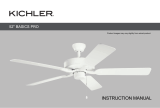 Kichler Lighting 330018NI User manual
Kichler Lighting 330018NI User manual
-
Kichler Lighting 330016NI User manual
-
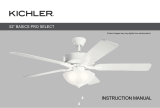 Kichler Lighting 330017MWH User manual
Kichler Lighting 330017MWH User manual
-
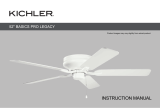 Kichler Lighting 330020MWH User manual
Kichler Lighting 330020MWH User manual
-
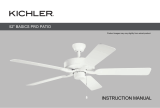 Kichler Lighting 330015SBK User manual
Kichler Lighting 330015SBK User manual
-
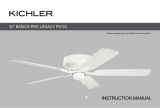 Kichler Lighting 330021MWH User manual
Kichler Lighting 330021MWH User manual
-
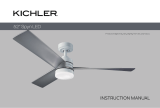 Kichler Lighting 300275AVI User manual
Kichler Lighting 300275AVI User manual
-
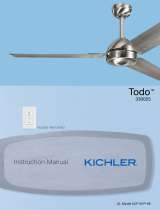 Kichler Lighting 330025SBK User manual
Kichler Lighting 330025SBK User manual
-
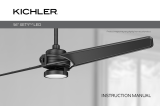 Kichler Lighting 300702NI User manual
Kichler Lighting 300702NI User manual
-
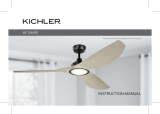 Kichler Lighting 300365SBK User manual
Kichler Lighting 300365SBK User manual
Other documents
-
 Minka-Aire F846-SL User manual
Minka-Aire F846-SL User manual
-
AIRE BY MINKA F846-SL Operating instructions
-
Savoy 52-417-3WA-13 Owner's manual
-
Kichler 300317DBK User manual
-
Progress Lighting 93099659 B Installation guide
-
Progress Lighting 93099650 B Installation guide
-
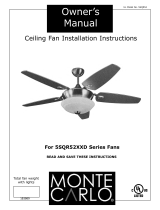 Monte Carlo Fan Company 5HNR52 Owner's manual
Monte Carlo Fan Company 5HNR52 Owner's manual
-
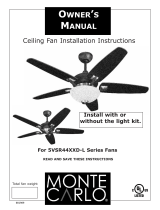 Monte Carlo Fan Company 5vsr44XXd-l series Owner's manual
Monte Carlo Fan Company 5vsr44XXd-l series Owner's manual
-
NOMA Estate052-6964-6 User manual
-
Kichler 300395 User manual










































































